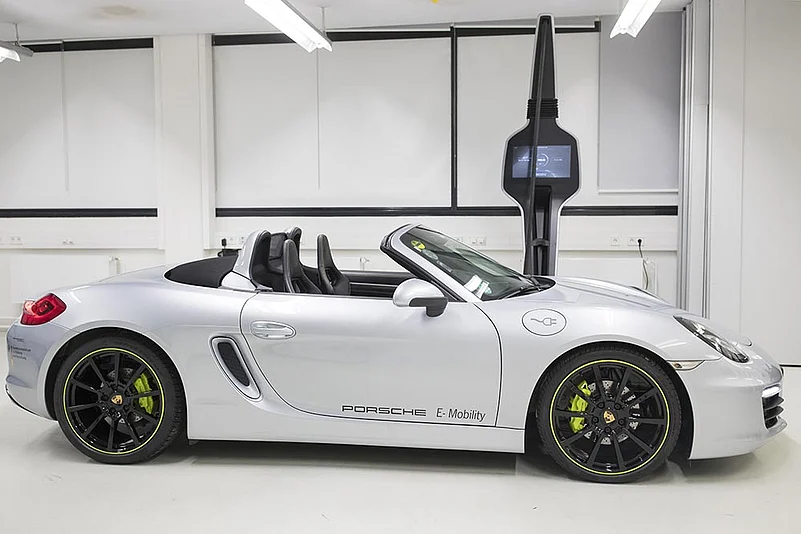Set to be launched in 2019, the Mission E is the first Porsche that is an all-electric, all-wheel drive sports car, generating more than 600 hp with the ability to cross 500 km before a charger-stop. Porsche is one of the pioneers of a new technology that uses an 800-volt system instead of the more common 400-volt technology. This means a lower weight due to thinner cables, faster charging times and therefore the ability to cover a longer distance with shorter breaks. And most significantly, the car will be ready for 80 per cent of its range with just 15 minutes of charging.
The Mission E is just one example of the phaenomenon of the sporty side of driving being fully engaged with new developments and advancing technology in the world of electric cars, even as research is underway to achieve better well-to-wheel efficiency and reduce emissions (in the case of hybrids), and infrastructure is being reinforced to make charging points a universal sight.
Even in its everyday avatar, the electric vehicle isn’t just an all-serious, earth-conscious, energy saving set of ideologies on wheels. Thanks to Tesla, the poster boy of the electric revolution, the image of an immensely drivable and inspiring car is settling in. The performance version (P100D) of the Tesla Model S can touch 100 kph in less than 2.7 seconds, making it the fastest production car of all time. The handling of the vehicle is also supercar-class thanks to a co-efficient of drag (Cd) of .24. Why, for that matter, even the king of everyday hybrids, the Toyota Prius, can brag about a Cd of .26. And the Model S, just like the Hyundai IONIQ which is the Prius’s brand new rival, has an exceptionally low centre of gravity due to its driving force—the large batteries—being mounted beneath the wheels.
Electric cars, therefore, can be designed to electrify. And they have begun to do so even in the realm of motorsport. Formula E, which is scheduled to commence its fourth season in December, features vehicles whose motors are powered by a 200-kg battery capable of propelling the car to 225 kph. This may seem paltry in comparison to Formula One, which has been setting the tracks on fire since 1950, and which has cars that can reach speeds of up to 350 kph, but the racing scene for electric cars is developing at the same pace as the technology, and this ‘futuristic’ sport is already considering a driverless race!
Another championship is Electric GT, which will start its inaugural season next month and which will be held on existing, classic racetracks as opposed to the temporary street circuits of Formula E. Tesla, which had until recently held aloof from racing, is now preparing to deploy a specially adapted version of the Model S P100D, which will be used by all teams participating in Electric GT. For a car that is known for its ‘ludicrous’ power, this is perhaps nothing but the most natural course of evolution.
(The author is a leading motoring blogger based in the UAE. You can find him online at drivemeonline.com.)
















